7 out of 10 chainsawers DON’T actually know when it’s the right time to replace the chainsaw chain sprocket. 🤦
They either replace it TOO early (wasting money and time), or wait too long and end up damaging their saw and chain!
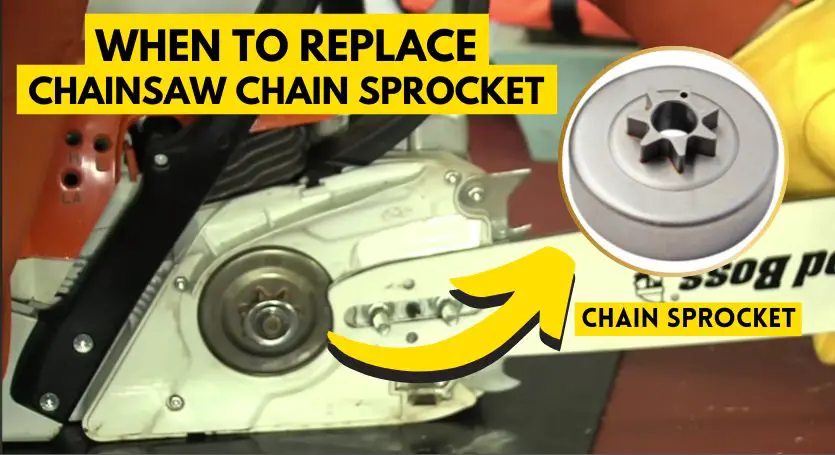
So, when to replace the chain sprocket?
Let’s figure it out:
Table of Contents
ToggleWhen to Replace the Chainsaw Chain Sprocket?
There’re mainly two types of chain sprockets (also known as drive sprockets):
- The spur sprocket and
- The rim sprocket.
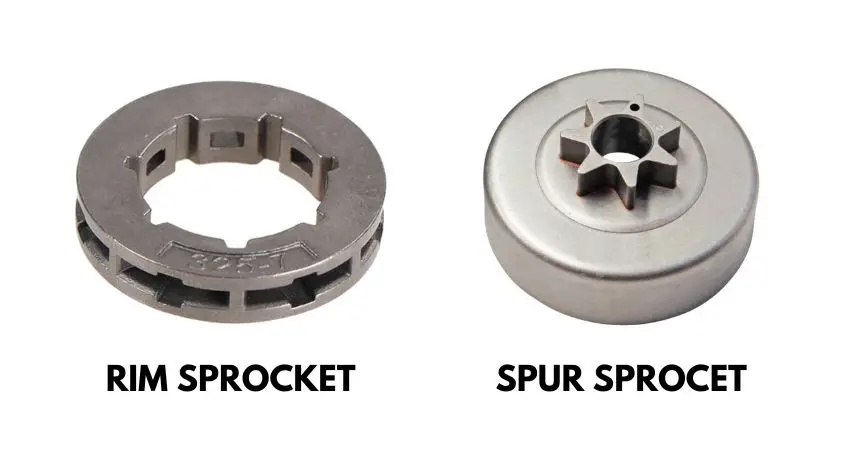
You should replace a spur sprocket when the wear marks on the teeth become 0.5mm to 0.6mm deep. If you’ve got a rim sprocket, replace it when the wear marks reach the wear indicators (usually 0.25mm to 0.50mm).
Let’s dig a little deeper and look at each type of sprocket individually.
Spur Sprocket
Spur sprockets are those that have a single, continuous row of teeth. The chain sits directly around the teeth. These are generally the most common type of sprocket.
I found spur sprockets to last longer than rim sprockets. But one drawback is, they’re more expensive.
Here’s how a brand-new spur looks: 👇
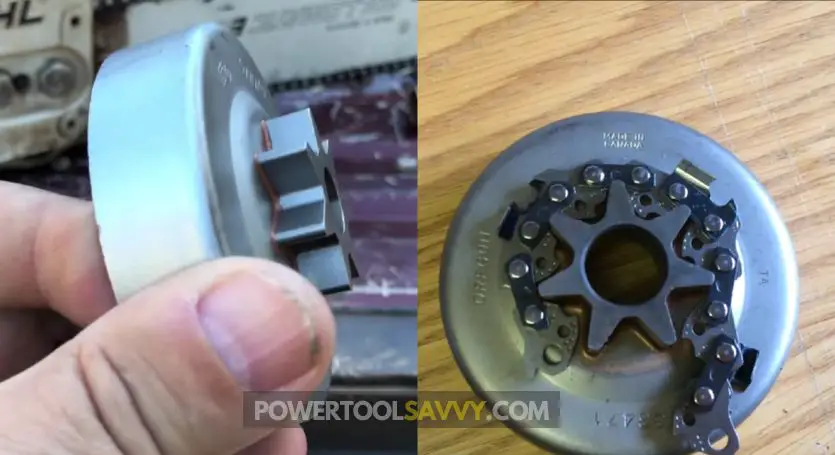
- The teeth are smooth and have a uniform height, with no visible signs of wear or damage.
- There is enough space between the teeth for the chain to sit easily.
- More importantly, there’s no groove in the teeth.
But as you use the chainsaw, the chain sprocket starts to wear down. Here’s how a worn-out spur sprocket looks: 👇
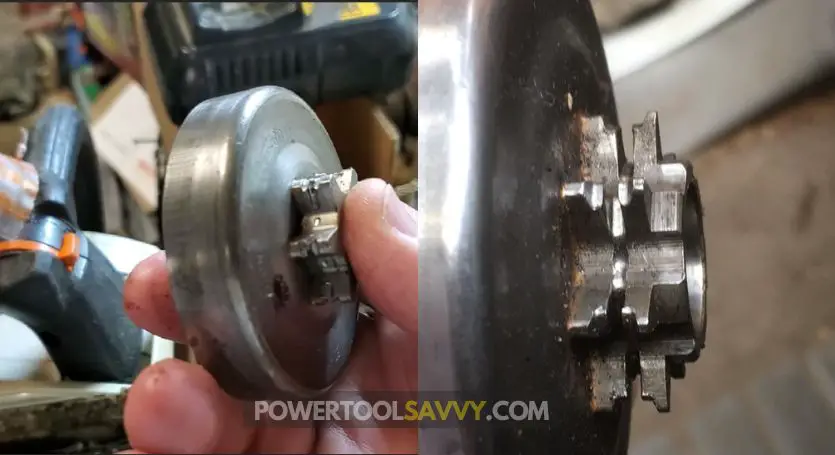
- The teeth have become rounded and shallow.
- The wear marks are visible, and they’ve developed a visible groove in the teeth.
- The drive links on your chain can’t sit snugly around the teeth.
If you’re using a spur sprocket that has reached this stage, you should replace it.
Rim Sprocket
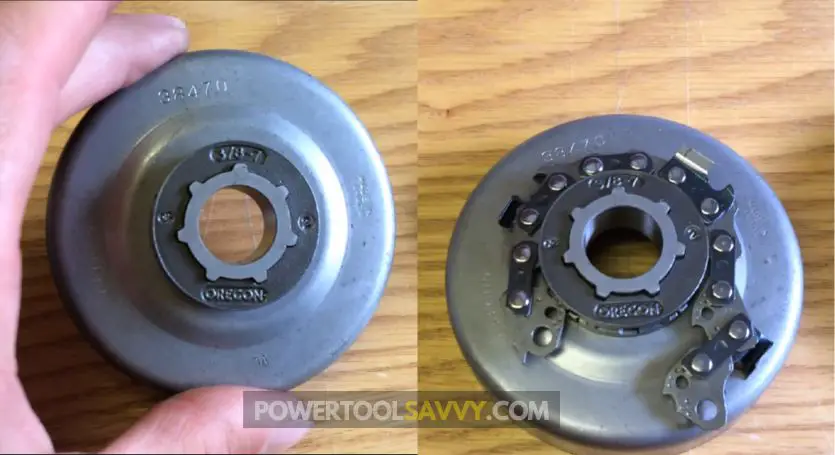
Rim sprockets are quite different from spur sprockets. Rather than having a single, continuous row of teeth, they have grooves/slots around the circumference where the chain sits.
Though rim sprockets don’t last as long as spur ones, they’re cheaper and easier to replace.
The best part?
They have wear indicators that help you tell when it’s time to replace the sprocket. If the wear marks reach that level, it’s time to get a new one!
Here’s what I mean: 👇
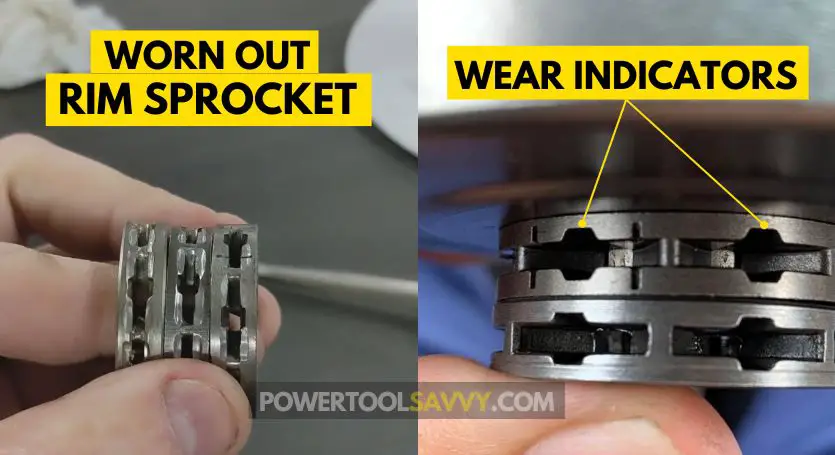
How Often Should You Replace Your Chainsaw Chain Sprocket?
A good rule of thumb is to replace your chainsaw chain sprocket once every 2 chain replacements. This will ensure that your chain doesn’t wear out prematurely and can help improve the performance of your chainsaw.
Manufacturers also recommend the same.
Oregon says, “Never run any chain on a worn drive sprocket, especially a new chain. Replace drive sprocket systems after every two chains, or sooner.” (Source, Page 24)
That’s not all!
Husqvarna recommends its customers to replace the sprocket for every other chain replacement.
They say, “It is generally recognized that the sprocket wear would be at its allowable limits by the time the second chain needs to be replaced.” (Source)
If you ask me, I prefer replacing the sprocket for every 1-2 chain replacements (not more than that!).
On most of my saws, I have rim sprockets, and they don’t cost more than a few bucks. So, I see no loss in replacing it with every couple of chain replacements.
How to Tell if a Chainsaw Chain Sprocket is Worn Out?
Here’s the truth:
While it’s recommended that the chain sprocket should be replaced after a certain number of chain replacements, it’s very likely that some saw owners will ignore this advice and wait for the sprocket to wear out completely before they replace it.
That’s why it’s important to know how to tell if a chainsaw chain sprocket is worn out.
1. Check for Visual Wear Signs
It may sound a bit obvious, but the BEST way to tell if the sprocket is worn out is to inspect it visually.
Here’s how you do it: 👇
- Turn your chainsaw off and make sure everything is COOL.
- Loosen your chainsaw clutch cover nuts using the combination spanner tool.
- Now, remove the cover and inspect the sprocket. Look for signs of wear, such as deep grooves (check the image below) or missing teeth.
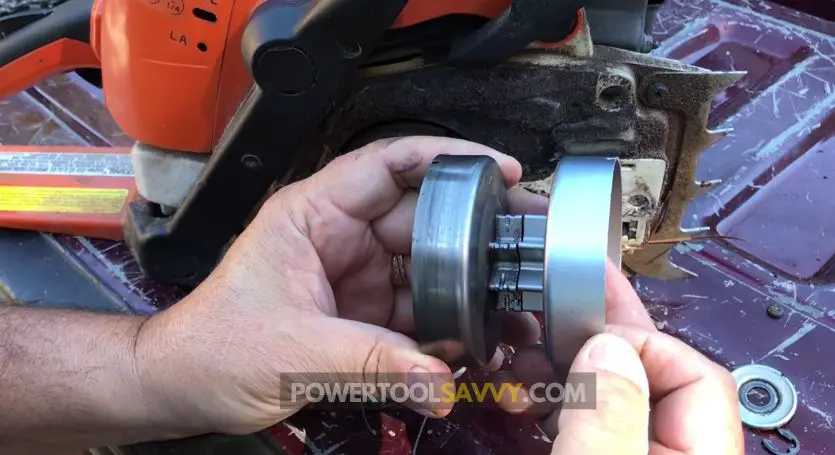
- If you see grooves on the teeth, measure them with a control gauge. If they’re deeper than 0.5mm, then it means your sprocket is worn out and needs to be replaced ASAP!
- For the rim sprocket, check if the wear marks have reached the sprocket’s inner walls.
2. The Chain Keeps Coming Off the Bar
An EASY sign that the sprocket is worn out is when your chainsaw chain keeps coming off the bar.
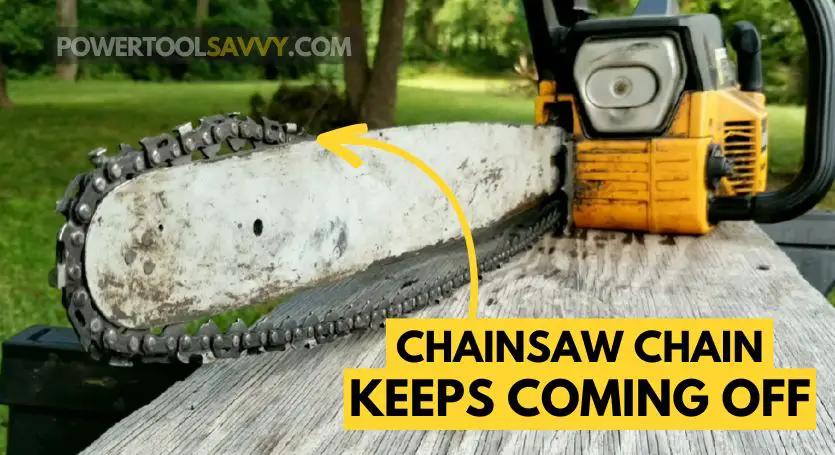
Let me explain:
The chain sprocket is responsible for keeping the chain firmly attached to the bar and moving along it.
But when the sprocket is worn out, the chain gets loose because the drive links no longer fit properly into the sprocket’s grooves. This causes the chain to come off the bar more often.
So, if you’re experiencing this problem, it’s likely that your sprocket is too worn and needs to be replaced. (Learn More: What Causes a Chainsaw Chain to Come Off the Bar?)
3. Unusual Noises or Vibration Coming from the Saw
Another sign that the sprocket is worn out is when you start to notice strange noises or vibrations coming from your saw.
Let’s make it clear:
Chainsaws themselves are quite loud, so it’s normal for them to make a certain amount of noise!
But if the noise suddenly becomes louder or you start to feel an unusual vibration, it might be an indication that the sprocket is bad.
If you experience this, I recommend stopping your work immediately and giving it a quick inspection!
4. Your Saw is having Difficulty Cutting Through
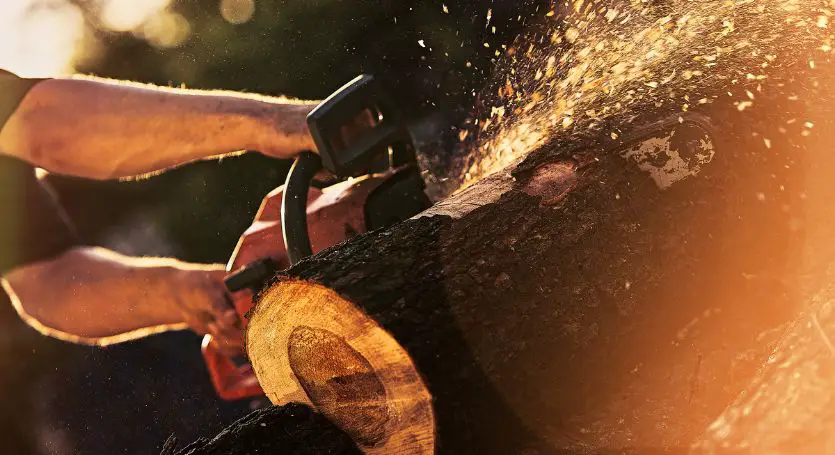
If your chainsaw isn’t cutting properly, it might be because the sprocket is worn out.
When a sprocket develops deep grooves on the teeth, the chain doesn’t fit properly into them. This makes it difficult for the chain to cut through materials, resulting in inefficient cutting performance.
So, if it feels like your chain is skipping or not cutting, then you should pay close attention to the sprocket’s condition.
(Read this article where I’ve discussed a few other reasons that might cause a chainsaw not to cut!)
5. Your Chainsaw Uses More Fuel than Usual
Yup, you read that right!
A worn-out drive sprocket can also affect your saw’s fuel efficiency.
The sprocket on your chainsaw is connected to the clutch, which is responsible for transferring power from the engine to the chain.
Now, if your sprocket has become too worn out, it won’t be able to do its job properly.
This means that the engine will have to work more, resulting in higher fuel consumption.
What Causes a Chainsaw Sprocket to Wear?
Frankly speaking:
It’s normal for any chainsaw chain sprocket to wear out over time due to its constant use.
However, there are a few things that might accelerate the sprocket’s wear rate. For example –
- Using the wrong pitch chain,
- Using the chainsaw for extended periods without taking breaks (this causes the sprocket to wear out faster due to heat build-up!)
- Operating the chainsaw at high speed,
- Failing to keep the chain tight enough while cutting, (Read this article where I’ve covered how tight a chainsaw chain should be in detail)
- Nor lubricating the chain properly,
- Using the saw to cut hardwoods or any other materials that are too hard or abrasive for it (e.g., nails, metal, concrete).
That’s all I can think of, folks. There’re a few more, but these are the most common ones.
How to Replace a Worn-Out Sprocket?
Replacing a worn-out sprocket isn’t a terribly difficult job, but it is one that needs to be DONE with care.
The following steps will help guide you through the process of safely and effectively replacing your old sprocket: 👇
- Make sure the engine is off, and wear protective gloves.
- Loosen the cover nuts with a combination spanner wrench and take the clutch cover off.
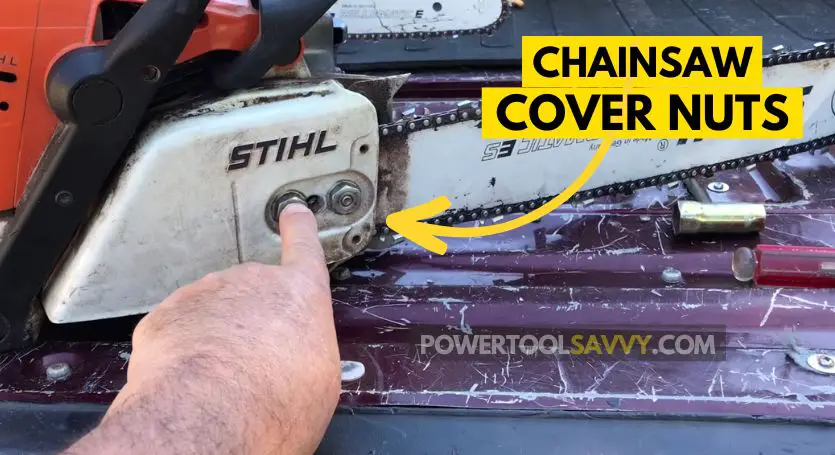
- Now, take the bar and chain off the sprocket carefully.
- You’ll see a seal clip (check the image below) that’s holding everything up. Take it off using a flathead screwdriver (apply a little pressure if needed!).
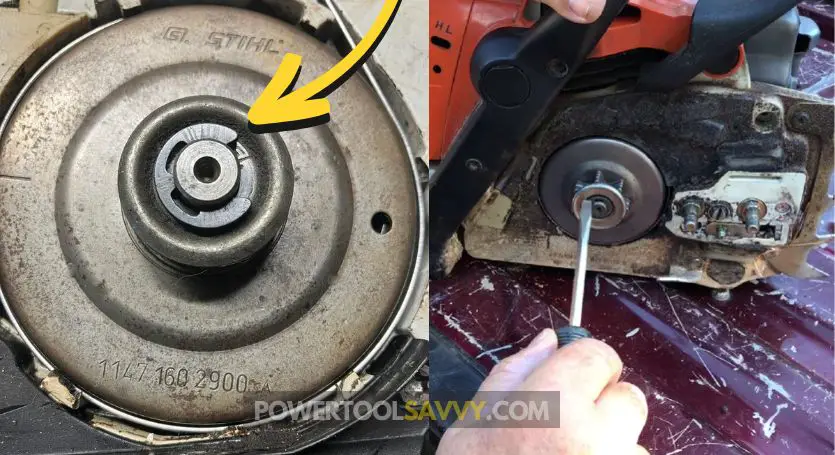
- Remove the washer and pull the old sprocket out.
- Now, take the new sprocket and put it in place. But make sure the notch on your sprocket line up with the small-little rod (check the image below).

7. Secure the washer and seal the clip back in place, and then tighten the bar nuts to hold it all together.
Wait, there’s a catch!
This process only applies to chainsaws that have an outboard sprocket system (Figure A). If your chainsaw has an inboard sprocket system (Figure B), then you’ll have to take the clutch off first to replace the sprocket.
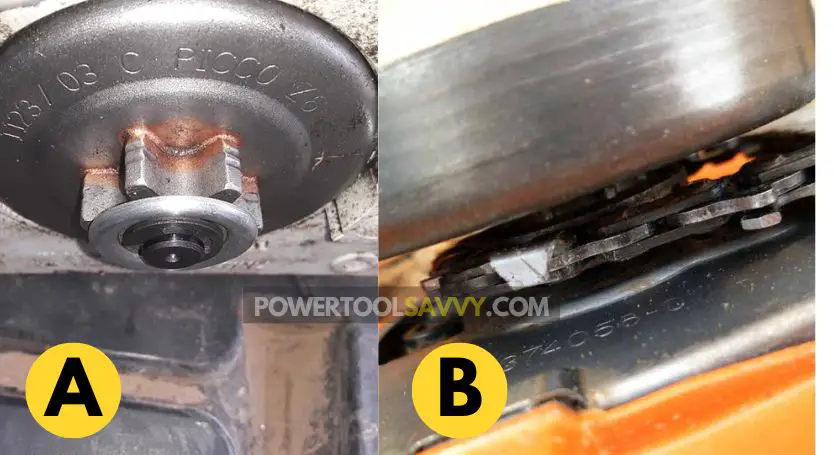
And to do that, you’ll have to stop the piston.
Otherwise?
You’ll keep spinning the clutch all day long, but it won’t come off.
So, if you’ve got an inboard sprocket system, follow this video to replace the sprocket in a few simple steps.
And that’s it! You’ve just replaced your worn-out sprocket
What Happens if You Don't Replace a Worn-Out Chain Sprocket?
I know a lot of folks who keep using the same worn-out sprocket because they think it’s not that important.
But guys, STOP! Don’t be like them. ❌
A worn-out sprocket could cause you several issues. For example –
- It will prevent the chainsaw from functioning properly, and could potentially cause damage to the chainsaw itself.
- The chain might not rotate smoothly, causing it to get stuck or to come off the bar altogether (Learn More: What Causes a Chain to Get Stuck in the Bar?). This can be dangerous, as the chain can cause serious injury if it comes into contact with the skin.
- Plus, a worn-out drive sprocket might cause the chain to wear more quickly (leading to additional repair costs.)
- Also, a worn-out chain sprocket WON’T let you cut straight! (Here’re 7 other reasons that can cause a chainsaw to cut CROOKED!)
In other words, it doesn’t really matter how much money you saved by not replacing the sprocket – it could cost you more in the long run.
What’s your opinion on this?
Tips for Maintaining the Chainsaw Chain Sprocket:
Here’re some tips to help you maintain your sprocket in good condition:
- Follow the manufacturer’s recommendations for lubrication. Proper lubrication is the key to a well-maintained drive sprocket! Don’t cut corners with this one.
- Keep the chain properly tensioned (I’m repeating this one). If the chain is too loose, it will cause additional wear on the sprocket.
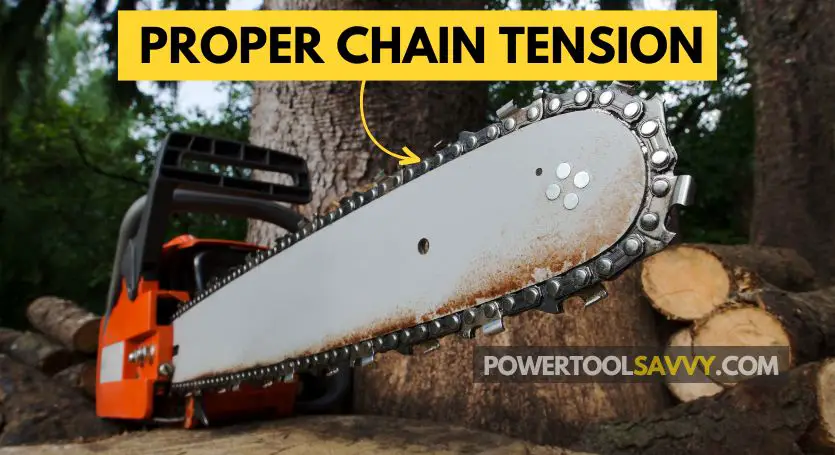
- Clean the chainsaw regularly. This can help prevent debris from accumulating inside and around the sprocket.
- Avoid cutting through dirty or abrasive materials. These can cause damage to not only the sprocket but also other components of your chainsaw.
- Replace the sprocket if it becomes excessively worn. I’ve already discussed what can happen if you don’t do this. Not going to repeat it here.
Ending words!
Hopefully, this guide has helped you understand when and why to replace a chainsaw sprocket.
Share this with your arborist friends so that they, too, know when it’s the right time to replace the sprocket.
And if you have any questions, feel free to drop a comment, and I’ll be more than happy to help you out.
Happy sawing! 🌳 🪓

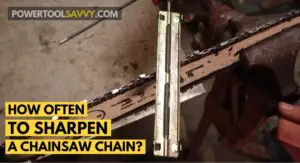
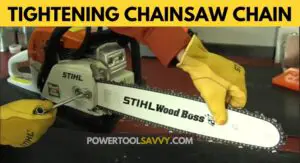
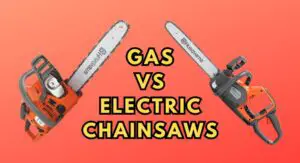
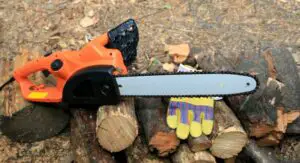

Pingback: Do Chainsaw Chains Stretch? (STOP Wasting Your Money!)